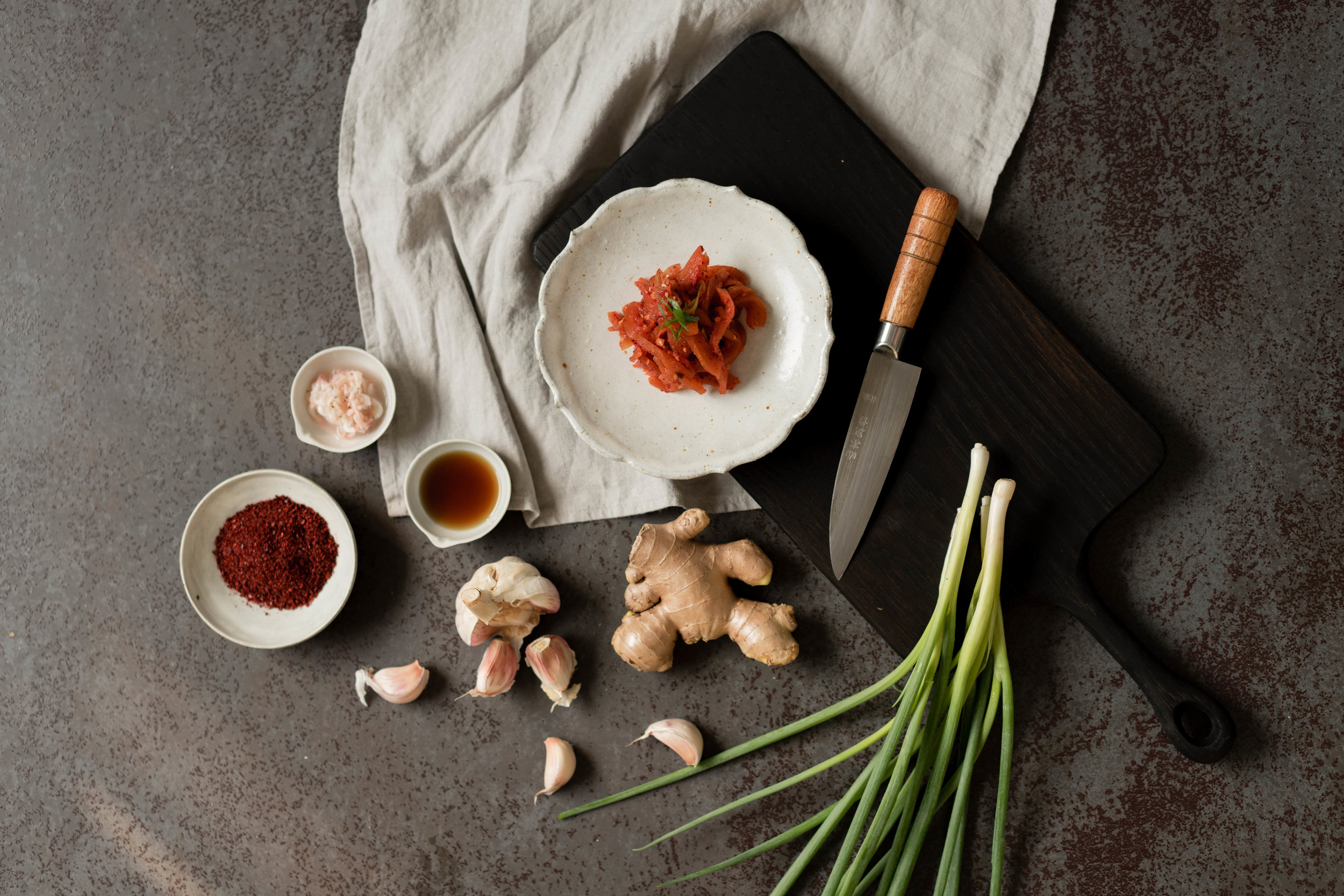Watermelon Rind Kimchi

I’m Korean. We don’t let anything go to waste. We will eat almost all parts of anything edible. Nose to tail, root to stem, seed to skin – everything is fair game to most Koreans when it comes to food. This zero waste philosophy is not necessarily out of thrift, though it’s obviously economical to reduce wastefulness, and we Koreans love being thrifty. I think this approach to eating is more about believing we shouldn’t take anything for granted. We should be grateful for what we have and relish every last bit of it.
That’s why these days I’ve been challenging myself to waste less in my kitchen. I’ve been playing around with ways to use the scraps and peels and off cuts that usually go straight from my cutting board to the bin. The Korean tradition of pickling and fermenting is the perfect way to use up my scraps. At the moment, my fridge is stocked with countless jars of daikon peel in turmeric-tinted brine, fermenting radish tops and honeyed marmalades made with juiced lemon halves. My favourite use of scraps so far, which I’ve been enjoying every single day, is kimchi made from watermelon rind.
For me, no fruit embodies summer as much as a gorgeous, crisp watermelon, dripping with sugary goodness. Watermelons equal beach barbecues, stark tan lines, sunny days that go on forever. How many kilos of watermelon have I sweatily lugged home from the market every summer? And how much of that weight was thrown away after the sweet, red flesh was gone?
A little salt, and a lot of garlic and chilli powder, turn leftover watermelon rind into a kimchi that keeps in the fridge for weeks but still manages to be refreshing. Forget the utterly predictable traditional cabbage or daikon kimchi. Each bite of watermelon rind kimchi somehow retains the fresh, juicy taste of summer – if summer were slathered in a salty, spicy umami bomb. This recipe reminds me of a better version of the traditional julienned radish kimchi that accompanies pork belly (bo ssam) in Korea. I’ve been wrapping up this kimchi with grilled lamb or beef in lettuce or Korean perilla leaves, and I won’t stop until this gigantic jar is gone. Given how much watermelon my house has been through, it’s going to be a while, hurrah. Never ever let me go, summer time.
xx Mina
Watermelon Rind Kimchi
400g watermelon rind, with little to no red flesh, the green skin peeled, sliced thinly
1 Tbs coarse sea salt
2 ½ Tbs Korean chilli powder
½ tsp fish sauce
2 tsp garlic, minced
1 tsp ginger, minced
1 spring onion, chopped
½ tsp sesame oil
½ tsp sesame seeds, toasted
Using your hands, massage the coarse sea salt into the watermelon rind in a large bowl. Leave for 30 minutes to let the salt draw out the moisture from the rind. Then rinse the rind under cold water, drain and gently squeeze the rind to remove any excess water.
Combine all of the remaining ingredients with the rind and mix thoroughly. I use my hands with plastic gloves to make sure every centimetre of the rind is covered in the marinade. I recommend putting this in a glass jar or container since the chilli powder and garlic can permeate plastic forever. This can keep in the fridge for several weeks.
Note: For kimchi, coarsely ground Korean chilli powder (gochugaru) is the only kind of chilli powder I would recommend. I think Korean chilli powder is milder and less salty compared to other chilli powders such as cayenne. It also gives the kimchi a more beautiful bright red colour, whereas other powders can be quite muddy. If you can’t find Korean chilli powder, I suggest skipping it altogether and you’ll still have a tasty, savoury condiment. For the fish sauce, I regularly use Korean, Thai or Vietnamese fish sauce interchangeably when making kimchi.







